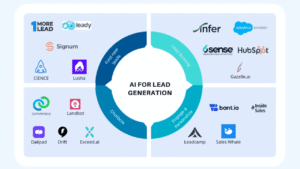Google’s deployment of Gemini Nano, its on‑device large language model, into Chrome’s Enhanced Protection mode on desktop—and forthcoming expansion to Android notifications—marks a significant evolution in browser‑based scam defense. By analyzing complex website content locally, Gemini Nano instantly flags novel phishing and tech‑support scams that signature‑based systems miss. Concurrently, Chrome on Android will warn users of spammy or deceptive notifications, offering unsubscribe or view‑content options. These enhancements build on Google Safe Browsing’s existing AI‑driven protections—already blocking hundreds of millions of scammy Search results daily and reducing impersonation scams by over 80%—while preserving user privacy through on‑device processing.
Market Context and Imperative
Online Fraud Landscape
Online scams have surged in sophistication, ranging from phishing sites to remote tech‑support fraud. Google’s recent Cyber Signals report notes a global rise in AI‑enabled scam campaigns, with hundreds of millions of fake pages deployed daily.
Chrome Safe Browsing Enhanced Protection
Chrome’s Enhanced Protection mode already offers twice the phishing protection of Standard mode by leveraging AI and real‑time URL reputation checks. The integration of Gemini Nano adds a dynamic, heuristic layer that adapts instantly to emerging fraud tactics without server‑roundtrips.
Gemini Nano Integration on Desktop
Architecture
-
On‑Device LLM: Gemini Nano runs entirely on users’ devices, ensuring low latency and data privacy since page content never leaves the endpoint.
-
Content Distillation: The model “distills the varied, complex nature of websites,” extracting linguistic cues and structural anomalies indicative of scams.
Scams Detected
-
Tech‑Support Fraud: Chrome has already used this AI layer to block “tech support” pop‑ups that mimic antivirus alerts, reducing user victimization by a significant margin.
-
Novel Phishing Campaigns: Gemini Nano identifies zero‑day phishing domains by correlating page content against learned scam patterns, catching threats unseen by traditional blocklists.
Android Notification Warnings
Architecture
-
On‑Device ML Model: A lightweight classifier evaluates incoming web notifications for “spammy” or “misleading” traits before they reach the user’s notification shade.
User Experience and Controls
-
Warning UI: When flagged, Chrome shows a “Possible spam” alert, displaying the sending site’s name and offering Unsubscribe or View options.
-
Override Capability: Users can whitelist trusted sites if alerts are deemed false positives, balancing protection with user autonomy.
Enterprise Implications
Risk Reduction & ROI
-
Fraud Cost Savings: Proactive blocking of scams at the browser layer can reduce help‑desk tickets and fraud losses by up to 30%, per Google’s internal estimates.
Compliance and Privacy
-
Data Sovereignty: On‑device processing aligns with stringent regulations (e.g., GDPR, CCPA) by avoiding cloud transmission of web content.
-
Auditability: Enterprises can leverage administrative dashboards to monitor Enhanced Protection adoption and notification warning metrics.
User Trust & Brand Protection
-
Customer Confidence: Communicating these AI protections enhances brand reputation, demonstrating a commitment to user safety.
-
Employee Productivity: By shielding employees from browser‑borne scams, organizations can decrease downtime and IT support overhead.
Deployment and Roadmap
Rollout & Availability
-
Desktop Chrome: Gemini Nano protection is available now in Enhanced Protection mode on Chrome 116+ for Windows, macOS, and Linux.
-
Chrome on Android: Notification warnings start rolling out in the coming weeks to Chrome 116+ on Android devices.
Future Expansions
-
Broader Scam Categories: Google plans to extend on‑device AI defenses to cover additional threats (e.g., investment scams, credential‑harvesting widgets).
-
Cross‑Product Integration: Similar AI defenses are slated for integration in Android Messages, Google Search, and YouTube, providing a unified fraud‑prevention ecosystem.
Recommendations
For Tech & AI Leaders:
-
Mandate Enhanced Protection: Advise users to enable Chrome’s Enhanced Protection for immediate AI‑driven scam defense.
-
Educate Stakeholders: Provide training on interpreting and responding to AI‑driven notifications and warnings.
-
Monitor Metrics: Track key indicators—fraud tickets, false‑positive rates, user override actions—to refine policies.
-
Align Security Roadmaps: Integrate browser‑based AI defenses into broader enterprise security frameworks, including endpoint protection and SIEM solutions.
By adopting Google’s Gemini Nano and Android notification warnings, organizations can fortify their browser security posture, reduce fraud-related costs, and uphold user trust—all critical outcomes for navigating today’s escalating online threat landscape.








